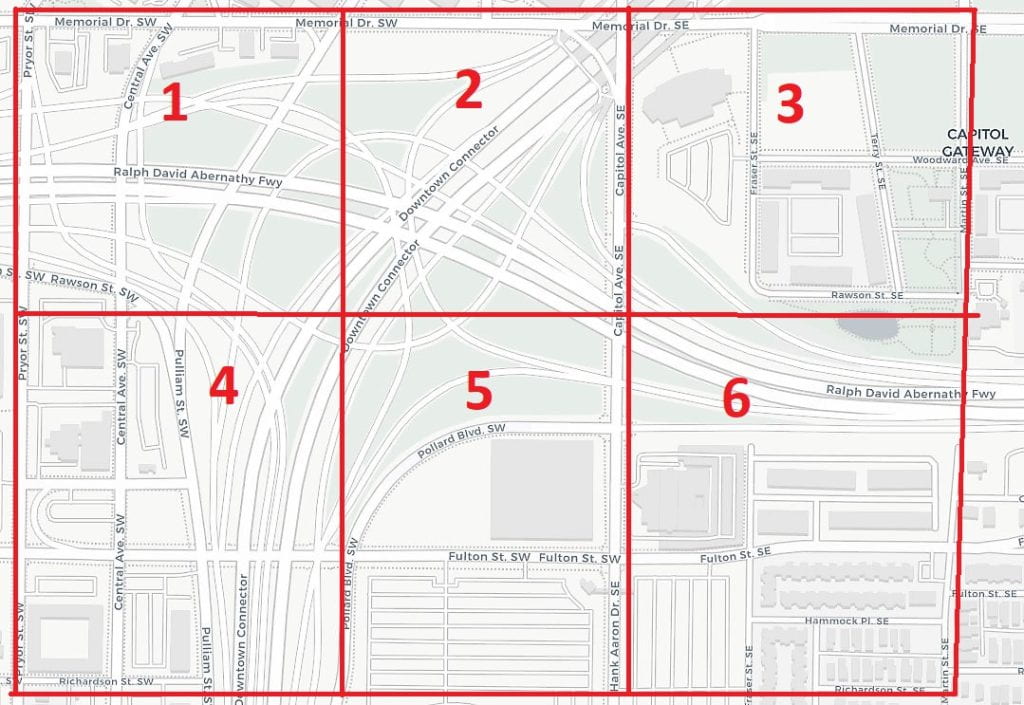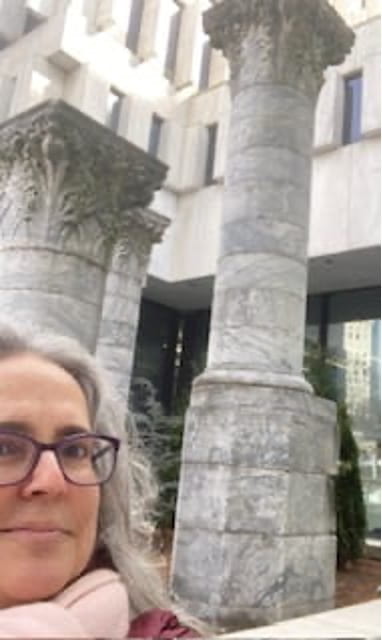I pass by this monument everyday coming onto campus (the bus I take to campus lets us off just one block down from it). But the first time I really ever noticed it was on the “Women in Downtown Atlanta” walking tour with Amy Durrell that I went on for this course.

Barbara Miller Asher and I
The monument is a representation of Barbara Miller Asher. She gained community favor through 14 years of volunteer work and was elected to her first term as a city council member in Atlanta in 1977, serving multiple terms.1 The statue commemorating her is located on the intersection of Marietta St. NW and Broad St. NW in front of Broad Street Plaza.
I’m of the opinion that women should be taken much more seriously in history, and the records we have for women’s accomplishments and impacts should be under much more scrutiny. Barbara Miller Asher is no exception. I was almost able to find more information on the building of this monument and her marriage to her husband than I was on her achievements. Commemorating doesn’t even feel like the right word to describe the presence of a statue in her likeness. To me, it feels like more of just an acknowledgement that she existed.
I can’t help but compare the depictions of a woman to the depictions of a man. I believe it is very indicative to the culture’s attitude of women’s role in society. Here, while Barbara Miller Asher is at street-level, Henry Grady’s likeness (only one block down, also on Marietta St. NW) is much grander, being several feet above the road and holding a godlike stature above two women who look meek and in need of protecting. Barbara looks much more inviting. I’ve noticed that she has a smile on her face, her knees being bent makes her look less intimidating, and overall she just seems very welcoming. To me, her monument is a reminder that women are people, while statues commemorating men display that they get to assume the role of something more than that.
Since that walking tour, I know I’ll never be able to come to the Georgia State University campus without thinking of Barbara Miller Asher and women’s inescapable relegation to the background. In a way, her newfound prominence in my mind is already a stride in defeating that social norm.
- “Asher, Barbara Miller, November 20, 1985.” The Breman Museum , November 20, 1985. https://archivesspace.thebreman.org/repositories/2/archival_objects/27944. ↩︎
























